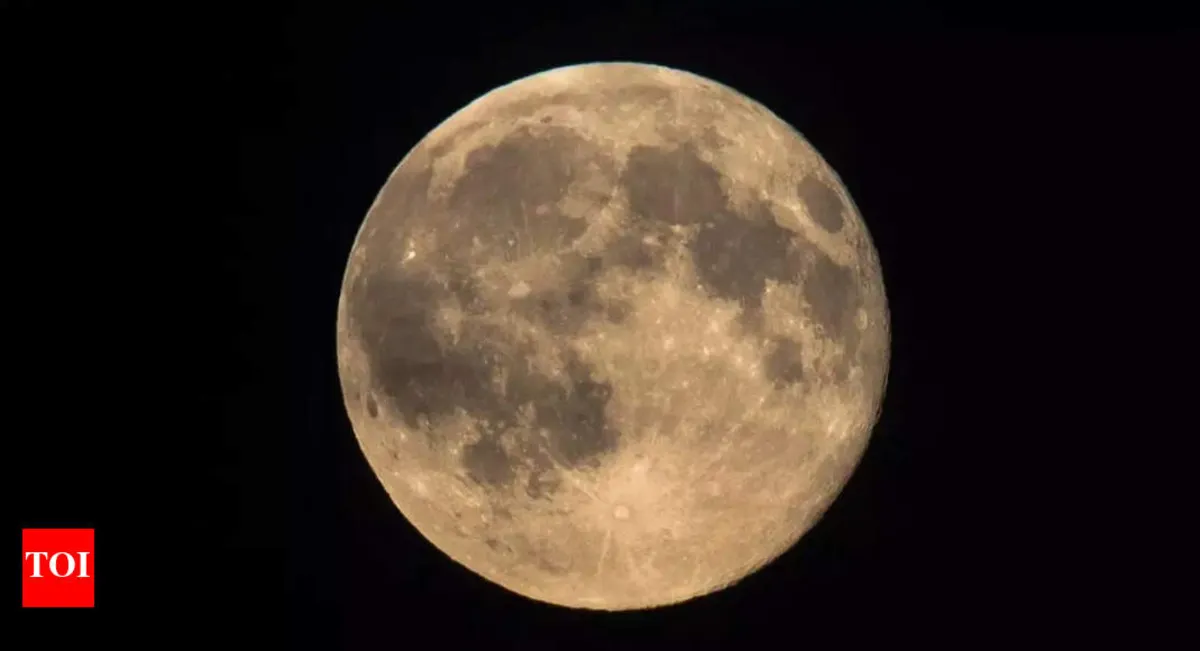
The Buck Moon, named for the period when male deer begin to grow their antlers, is set to reach its peak brightness on July 10, 2025. This stunning celestial event invites skywatchers to marvel at the night sky alongside other planetary wonders, including Mars, Venus, and Saturn. Occurring in the constellation Capricornus, this full Moon provides an excellent opportunity for stargazers to observe lunar details and appreciate the scientific significance of the full Moon phase.
The term “Buck Moon” originates from the indigenous peoples of North America, particularly tribes like the Algonquin, who named full moons to track the changing seasons and natural cycles. July’s full Moon coincides with the time when male deer, or bucks, begin to regrow their antlers after shedding them in the spring. According to the Old Farmer’s Almanac, these antlers can grow as much as a quarter-inch per day, a biological process influenced by testosterone and the longer daylight hours of summer. As such, this Moon symbolizes regeneration, strength, and preparation for mating season.
According to reports from USA Today, the July 2025 Full Moon will be visible on:
Date: Thursday, July 10, 2025 Time of Peak Illumination: 4:37 PM EDT / 3:37 PM CDTWhile the Moon reaches its peak fullness during daylight hours in North America, the best viewing experience will occur after local sunset, when it rises fully illuminated on the eastern horizon.
To fully enjoy the beauty of the Buck Moon, consider the following tips:
Time: Start observing about 30–60 minutes after sunset for optimal visibility. Location: Find a spot with a clear view of the southeast horizon. Elevated locations or areas with minimal urban light pollution, such as rural settings, observatories, or state parks, will yield the best sights. Equipment: The Buck Moon is visible to the naked eye, but using binoculars or a basic telescope will enhance the visibility of lunar surface details, including craters, maria (lunar seas), and highlands. Atmospheric Effects: As the Moon rises, it may appear larger and more golden due to Rayleigh scattering, creating an optical illusion known as the Moon Illusion. This well-documented phenomenon remains an intriguing subject for psychologists and astronomers alike.The Buck Moon will not be the only celestial body illuminating the night sky on July 10. Several planets will also be visible:
Mars: Visible just after sunset in the western sky, though it will set before midnight, making early evening viewing ideal. Venus: Rising around 2:00 AM local time in the eastern sky, Venus will shine brightly until sunrise. Saturn: Also visible in the eastern sky near the Moon, but due to the Moon’s brightness, binoculars or a telescope may be necessary to see its iconic rings.A full Moon occurs when the Sun, Earth, and Moon align in a straight line, with Earth situated between the Sun and Moon. This alignment allows for 100% of the lunar surface to be visible from Earth. The full Moon phase also influences tidal strengths, resulting in increased high and low tides due to gravitational alignment. The July 2025 Buck Moon’s appearance in the constellation Capricornus offers amateur astronomers a context to observe other stars and planetary bodies nearby.
The July full Moon is known by various names, each rooted in Indigenous traditions and early colonial farming culture. These names were utilized to track seasonal changes and agricultural patterns:
Buck Moon: Named for the time of year when male deer (bucks) begin regrowing their antlers. Thunder Moon: Refers to the frequent thunderstorms occurring in North America during midsummer. Salmon Moon: Reflects the seasonal migration of salmon upstream to spawn. Feather Molting Moon: Marks the period when ducks and other birds molt feathers in preparation for migration.These traditional names have been passed down through generations and continue to be recognized in modern skywatching guides like the Farmer’s Almanac.